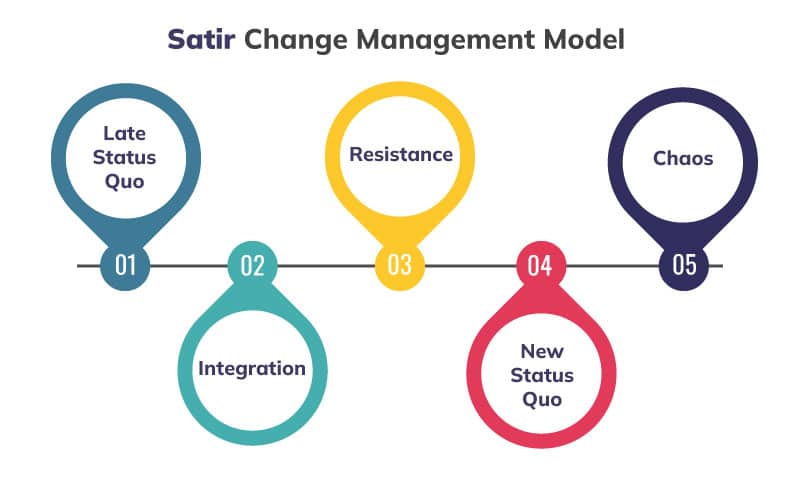Remote work has transformed how businesses operate, making employee engagement crucial for success. Companies are finding that engaged employees can be more productive and satisfied even when working from home.
To keep remote employees engaged, it is essential to adopt strategies that make them feel connected and valued.
Engaging remote employees involves more than just virtual meetings. It’s about creating an inclusive culture where remote workers feel part of the team.
Emphasizing open communication, leveraging technology, and fostering professional development can bridge the gap and enhance engagement.
By addressing the unique challenges of remote work, leaders can boost engagement and maintain a motivated workforce.
The role of leadership is vital in recognizing and appreciating efforts, which, in turn, drives productivity and loyalty.
Key Takeaways
- Effective strategies are key to engaging remote employees.
- Technology and open communication enhance remote engagement.
- Leadership plays a vital role in sustaining a motivated remote workforce.
Understanding Remote Work
Remote work has grown significantly in recent years, driven by advances in technology and the impact of global events like the COVID-19 pandemic. This section covers what remote work is and how it has evolved over time.
Defining Remote Work
Remote work means performing job duties outside traditional office spaces. This could be from home, a café, or a coworking space.
It involves using digital tools like email, chat apps, and video conferencing to stay connected with colleagues.
Remote teams often use project management software to track progress and collaborate on tasks. The goal is to maintain productivity without the need to commute.
Flexibility is a key feature, allowing employees to balance work and personal life more effectively.
History and Evolution of Remote Work
The concept of remote work is not new but has grown rapidly due to technological advancements and the coronavirus pandemic. In the past, few had the option to work remotely, mainly those in certain IT or freelance roles.
However, COVID-19 forced many businesses to adopt virtual work arrangements almost overnight. This massive shift has shown that many tasks can be done effectively outside the office.
Tools for video meetings, cloud storage, and collaboration have made it easier for teams to stay connected.
The trend continues to rise, with many companies now offering permanent remote work options.
Essentials of Employee Engagement
Effective employee engagement in remote work hinges on understanding the concept fully and recognizing its importance for businesses. Providing support, setting clear goals, and maintaining morale are key elements.
The Concept of Engagement
Employee engagement refers to the level of enthusiasm and connection employees feel towards their job and company. Engaged employees are more motivated to achieve company goals and show higher job satisfaction.
Engagement involves emotional investment, where employees are not just physically present but actively involved. This emotional investment can lead to greater innovation and productivity.
Importance for Businesses
Engagement is crucial because it directly impacts the company’s bottom line. Engaged employees are more productive, and they often exhibit higher morale.
They contribute to a positive company culture, which can reduce turnover rates and boost employee satisfaction.
High engagement levels can also lead to better customer service and improve overall business performance. Businesses that focus on employee engagement often see enhanced job satisfaction and loyalty among their workforce.
Challenges of Remote Engagement
Remote work presents several unique challenges, such as isolation and communication barriers. These issues can affect employee morale and productivity, making it crucial for organizations to address them effectively.
Isolation and Social Interaction
One significant challenge of remote work is the isolation felt by employees. With no in-person interactions, individuals may feel disconnected from their team and the company’s culture.
This lack of social interaction can lead to a decrease in motivation and engagement over time.
Isolation also reduces opportunities for casual conversations that can spark innovation and idea-sharing. Employees working remotely may miss out on the camaraderie and support of an office environment.
To combat this, companies can implement virtual team-building activities and regular check-ins to foster a sense of community.
Communication Barriers
Communication barriers are another major hurdle in remote engagement. Without face-to-face interaction, misunderstandings and misinterpretations can become more common.
Using multiple communication tools like emails, instant messaging, and video calls can help bridge this gap.
However, over-reliance on digital communication can sometimes lead to information overload or burnout. Providing training on effective remote communication and setting clear guidelines can help mitigate these challenges.
Employing collaboration tools and platforms that facilitate seamless interaction can also improve communication among remote teams.
Strategies for Enhancing Engagement Remotely
Improving remote employee engagement involves fostering teamwork, organizing team-building activities, and employing effective communication techniques. These strategies help create a connected, motivated remote workforce.

Fostering Teamwork
Encouraging teamwork in a remote setting is essential.
Regular virtual meetings can help maintain a sense of connection. Using collaboration tools like Slack or Microsoft Teams can facilitate communication and project management.
Setting clear goals and expectations allows team members to work towards common objectives. Recognizing and celebrating team achievements boosts morale and fosters a collaborative spirit.
Establishing virtual open-door policies can help employees feel more supported.
Managers should be approachable and ready to provide guidance. Assigning team roles and responsibilities ensures everyone knows their part in achieving the team’s goals.
Remote Team Building Activities
Virtual team-building activities are vital for maintaining team spirit.
Activities like online trivia games, virtual escape rooms, and video call coffee breaks can promote bonding. These activities should be scheduled regularly to keep the team engaged.
Organizing virtual workshops and learning sessions can also be beneficial. These sessions provide opportunities for professional development and team interaction.
Another idea is to host themed virtual events, allowing team members to showcase their personalities and interests.
Effective Communication Techniques
Clear and consistent communication is key to remote employee engagement.
Using a mix of communication tools such as email, video conferencing, and instant messaging helps keep everyone connected.
Platforms like Zoom or Microsoft Teams can facilitate face-to-face interactions.
Setting up regular check-ins and updates ensures everyone is on the same page. Providing feedback through these channels can also help employees feel valued and supported.
Encouraging open communication and creating a transparent culture can resolve issues promptly and keep the team cohesive.
Leveraging Technology for Engagement
Technology plays a crucial role in keeping remote employees engaged. It provides essential tools for communication and collaboration, which are the backbone of any successful remote work environment.
Communication Platforms
Effective communication is key to keeping remote teams connected.
Video conferencing tools like Zoom and Microsoft Teams allow for face-to-face meetings, which can help maintain a sense of team camaraderie.
Platforms like Slack offer instant messaging, making it easy for team members to share updates quickly and informally.
Channels can be created for various topics, helping to organize conversations and reduce email clutter.
Having these platforms ensures that employees stay informed and feel connected to their colleagues.
These tools also support features like file sharing and integration with other software, enhancing their functionality further.
Real-time communication can reduce misunderstandings and foster a more collaborative work environment.
Productivity and Collaboration Tools
Using the right productivity and collaboration tools can significantly increase employee engagement.
Project management tools like Trello and Asana help teams track their tasks and deadlines effectively.
These platforms provide visibility into the progress of projects, which can be motivating for employees.
Collaboration tools like Google Workspace allow for real-time document editing, making it easier for team members to work together efficiently.
These tools also support cloud storage, ensuring that important files are always accessible.
Additionally, leveraging AI to streamline workflows and automate repetitive tasks can free up time for more engaging activities.
Employees feel more productive and valued when they can focus on meaningful work rather than mundane tasks.
Creating an Inclusive Remote Culture
Building an inclusive remote culture involves balancing work-life harmony and offering mental health support to enhance the employee experience. These strategies foster a supportive and engaged remote work environment.
Promoting Work-Life Balance
Work-life balance is crucial to an inclusive remote culture.
Companies must ensure employees can separate job responsibilities and personal time.
Establishing clear boundaries for work hours helps prevent burnout. Flexible scheduling allows employees to manage personal commitments, such as family needs or medical appointments.
Regular check-ins with employees help managers understand their workload and personal needs.
Encouraging time off and respecting off-hours reinforces boundaries and reduces stress.
Sharing best practices for managing work and home life effectively can also be beneficial.
Including social activities like virtual coffee breaks or team-building exercises helps employees feel connected.
These interactions can break up the monotony of remote work and improve overall job satisfaction.
Employers should not underestimate the importance of promoting a balanced lifestyle.
Mental Health Resources
Mental health is a vital component of a supportive remote culture.
Providing resources like counseling, workshops, and wellness programs ensures employees have access to the help they need.
Companies should implement training to help managers recognize signs of mental distress and offer support.
Regular mental health check-ins can help identify issues before they escalate.
Encouraging the use of mental health days shows that the company values employee well-being.
Creating an open dialogue about mental health reduces stigma and fosters a supportive environment.
Role of Leadership in Engagement
Effective leadership is crucial in fostering employee engagement in remote work settings. Leaders must lead by example and provide the necessary direction and support to keep their teams motivated and connected.
Leading by Example
Leaders set the tone for engagement by embodying the values and behaviors they wish to see in their team.
When leaders are proactive and transparent, it inspires employees to do the same.
Consistency in communication and actions is key. This involves:
- Communicating Clearly: Regular updates and clear messaging help employees understand expectations.
- Showing Commitment: Participation in team activities and showing interest in employees’ well-being build trust.
- Adapting to Change: Demonstrating adaptability encourages employees to embrace new challenges and solutions.
By leading with integrity and enthusiasm, leaders can establish a culture of engagement even in a remote environment.
Providing Direction and Support
In remote work, clear direction and support from leaders are essential. This helps employees stay focused and feel valued.
Effective strategies include:
- Setting Clear Goals: Establishing clear, achievable goals helps employees understand what is expected.
- Offering Resources: Providing the necessary tools and resources ensures employees have what they need to succeed.
- Frequent Check-Ins: Regular meetings and feedback sessions help address any issues and provide encouragement.
Feedback and Recognition in Remote Settings
Managers can foster employee engagement in remote settings by implementing regular check-ins and providing consistent recognition and awards. This section will explore how these practices can improve team morale and create a productive work environment.
Implementing Regular Check-Ins
Regular check-ins are vital for keeping remote employees engaged.
These sessions offer a structured way for managers to provide feedback and support.
Check-ins should be scheduled regularly, such as weekly or biweekly.
During these meetings, managers can discuss progress on projects, address concerns, and set future goals.
Personalized attention is important. Managers should tailor their feedback to each employee’s needs and performance. This helps employees feel valued and understood.
Check-ins are also a good time for employees to voice their opinions and suggest improvements.
Employee Acknowledgment and Awards
Recognition plays a crucial role in boosting morale and motivation among remote workers.
Regular acknowledgment of achievements can make employees feel appreciated.
Companies can set up award programs to recognize outstanding contributions.
For example, managers could host virtual award ceremonies or send out certificates.
Peer recognition is also effective.
Creating a platform where colleagues can nominate each other for awards can foster a sense of community.
Anonymous compliments shared in team meetings can be very impactful.
Regular acknowledgment, even through simple messages, can go a long way in maintaining engagement and motivation.
Ensuring that every team member feels recognized can enhance job satisfaction and productivity.
Professional Development and Training
Many remote employees need access to learning opportunities and clear career growth paths to stay engaged.
Providing structured training and career advancement programs can lead to higher motivation and performance.
Upskilling Remote Employees
Upskilling is crucial for keeping remote workers competitive and productive.
Online workshops and courses can help employees learn new skills.
Many organizations offer courses on platforms such as Coursera or LinkedIn Learning.
Regular check-ins and feedback help identify skills gaps.
Personalized training plans can then address these areas, ensuring employees are always improving.
Using mentors can also guide employees through their learning journey.
Building a culture that values continuous improvement benefits both the employees and the organization.
It ensures that workers are prepared for new challenges and advancements in their field.
Career Growth Opportunities
Clear career paths are essential for remote employees to feel motivated and invested in their work.
Offering diverse opportunities like lateral moves and promotions helps address this.
Employees should have access to career counseling.
These sessions can clarify their potential growth within the company.
Regular performance reviews can also identify and support aspiring leaders.
Networking opportunities, even virtual ones, can expose employees to different roles within the company.
Encouraging participation in industry conferences and webinars helps broaden their horizons.
Advancement should be transparent.
Employees must know what is required for them to move up. This clarity can drive ambition and satisfaction, making them more engaged with their work.
Best Practices for Managing Remote Teams
Managing remote teams effectively requires clear expectations and the adoption of the right tools.
By focusing on these two key areas, managers can ensure their teams remain engaged and productive.
Establishing Clear Expectations
Setting clear expectations is crucial for remote teams.
Managers should create rules of engagement that outline team norms and individual responsibilities.
This can include guidelines on communication, such as expected response times and preferred channels.
Team meetings should be scheduled at times that accommodate everyone’s time zones.
Managers need to clarify what success looks like and provide measurable goals for projects.
Regular check-ins and one-on-one conversations can help ensure that these expectations are being met and provide opportunities for feedback.
Adopting the Right Tools
The right tools are essential for remote teams.
Utilizing platforms like Slack for messaging, Zoom for video conferencing, and Asana for project management can streamline communication and collaboration.
These tools help keep the team connected and ensure everyone stays on the same page.
Technology should be employed strategically to facilitate productivity.
Ensure all team members are comfortable using these tools and have access to any necessary training.
Regularly review and update the tools to match the evolving needs of the team.
This approach keeps the team efficient and well-coordinated in a remote environment.
Measuring and Sustaining Employee Engagement
Measuring and sustaining employee engagement in a remote work environment ensures that employees remain productive, committed, and satisfied with their roles.
Key strategies involve regular engagement surveys and a long-term commitment to maintaining high engagement levels.
Utilizing Engagement Surveys
Engagement surveys are a powerful tool to gauge how remote employees feel about their work and the organization.
These surveys can measure various factors such as job satisfaction, commitment levels, and areas needing improvement.
Surveys should be scheduled regularly.
For example, conducting quarterly surveys can help track changes over time.
Questions should be clear and direct, addressing aspects of work life like communication, workload, and support from management.
Use the collected data to identify trends and areas needing improvement.
For instance, if many employees report feeling disconnected, consider implementing more team-building activities.
Sharing results with employees and involving them in creating action plans fosters transparency and shows a commitment to addressing their concerns.
Long-Term Commitment to Engagement
Sustaining engagement requires ongoing efforts and a long-term strategy.
This involves consistent communication, recognition of achievements, and opportunities for professional growth.
Providing regular feedback helps employees understand their progress and areas for improvement.
Recognizing and rewarding success boosts morale and reinforces commitment.
Additionally, offering training and development opportunities can keep employees motivated and engaged.
Building a supportive culture is crucial.
Managers should be trained to offer emotional and professional support, ensuring that employees feel valued and heard.
Scheduled one-on-one meetings and team check-ins can help maintain this culture.
By maintaining a long-term focus on engagement, organizations can enhance employee retention and overall success, ensuring that remote teams remain connected and committed to their work.



